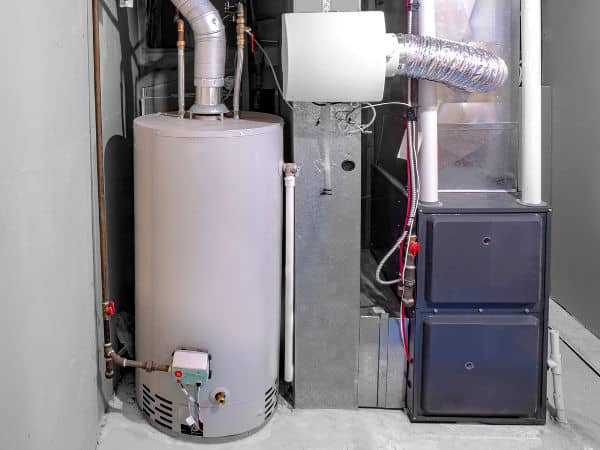Useful Techniques for Caring for Your Home's Hot Water SystemImportant Advice on Maintaining Your Home's Hot Water System
Useful Techniques for Caring for Your Home's Hot Water SystemImportant Advice on Maintaining Your Home's Hot Water System
Blog Article
In this article on the next paragraphs you will find some good quality information and facts on the subject of Water Heater Maintenance Tips You Can't Afford to Forget.

Hot water is crucial for daily convenience, whether it's for a refreshing shower or cleaning recipes. To ensure your warm water system runs efficiently and lasts much longer, normal maintenance is vital. This write-up provides useful pointers and understandings on how to maintain your home's hot water system to stay clear of interruptions and pricey repair work.
Intro
Maintaining your home's warm water system may appear complicated, yet with a few basic steps, you can guarantee it operates smoothly for several years to come. This guide covers every little thing from understanding your hot water system to do it yourself maintenance pointers and knowing when to call expert assistance.
Value of Maintaining Your Hot Water System
Normal maintenance not just extends the life expectancy of your warm water system but also guarantees it operates successfully. Ignoring maintenance can cause lowered effectiveness, higher energy expenses, and even early failure of the system.
Indications Your Hot Water System Requirements Maintenance
Understanding when your hot water system needs interest can stop major problems. Watch out for indicators such as irregular water temperature level, strange noises from the heating system, or rustic water.
Recognizing Your Warm Water System
Prior to diving right into upkeep tasks, it's helpful to understand the basic parts of your hot water system. Usually, this consists of the hot water heater itself, pipes, anode rods, and temperature controls.
Regular Monthly Upkeep Tasks
Routine month-to-month checks can aid catch minor problems before they intensify.
Purging the Hot Water Heater
Purging your hot water heater removes sediment buildup, enhancing effectiveness and lengthening its life.
Monitoring and Changing Anode Rods
Anode poles protect against corrosion inside the tank. Examining and changing them when worn is vital.
Evaluating and Changing Temperature Level Setups
Readjusting the temperature settings makes certain ideal performance and safety and security.
DIY Tips for Maintenance
You can do several upkeep tasks on your own to keep your warm water system in leading condition.
Looking for Leaks
Routinely evaluate pipes and connections for leakages, as these can result in water damages and higher costs.
Checking Pressure Alleviation Valves
Evaluating the stress relief valve guarantees it functions appropriately and avoids excessive pressure build-up.
Insulating Pipelines
Shielding hot water pipes lowers warm loss and can save power.
When to Call an Expert
While DIY upkeep is helpful, some problems require expert proficiency.
Complex Concerns Needing Specialist Assistance
Instances include significant leakages, electrical troubles, or if your water heater is consistently underperforming.
Regular Professional Upkeep Advantages
Expert upkeep can include thorough assessments, tune-ups, and ensuring conformity with safety criteria.
Conclusion
Normal upkeep of your home's hot water system is crucial for effectiveness, long life, and cost financial savings. By following these ideas and knowing when to look for specialist help, you can make sure a dependable supply of warm water without unexpected interruptions.
How to Maintain an Instant Hot Water Heater
Before tinkering with your hot water heater, make sure that it’s not powered on. You also have to turn off the main circuit breaker and shut off the main gas line to prevent accidents. Also turn off the water valves connected to your unit to prevent water from flowing into and out of the appliance. 2. When you’re done, you have to detach the purge valves’ caps. These look like the letter “T” and are situated on either side of the water valves. Doing so will release any pressure that has accumulated inside the valves while at the same time avoid hot water from shooting out and burning your skin. 3. When the purge valves’ caps are removed, you have to connect your hosing lines to the valves. Your unit should have come with three hoses but if it didn’t, you can purchase these things from any hardware or home repair shops. You can also get them from retail stores that sell water heating systems. Read the user’s manual and follow it to complete this task properly. When the hosing lines are connected, open the purge port’s valves. 4. You should never use harsh chemical cleaners or solutions when cleaning your unit. Make use of white vinegar instead. It should be undiluted and you’ll probably use about 2 gallons. 5. Now flush your water heater. This task should probably take about 40 minutes. We can’t give you specific directions for this because the procedure is carried out depending on the type, model and brand of your heater. With that being said, refer to the user’s manual. 6. When you’re done draining the unit, you have to turn off the purge port valves again. Remove the hosing lines that you earlier installed on each of the water valves. Put the valve caps (purge port) back in their respective places and be very careful so as not to damage the rubber discs that are found inside these caps. 7. Now that everything’s back in place, check your user’s manual again to find out how to reactivate your water heating system. 8. Once it is working, turn one of your hot water faucets on just to let air pass through the heater’s water supply pipes. Leave the tap on until water flows smoothly out of it. https://www.orrplumbing.com/blog/2014/september/how-to-maintain-an-instant-hot-water-heater/

Hopefully you liked our post on How to Maintain Your Water Heater & Prolong its Life. Thank you for taking a few minutes to browse our blog. Don't hesitate to set aside a second to share this blog post if you enjoyed reading it. Thanks a lot for your time. Come back soon.
Click Here Report this page